
Last fall our experts gave you the facts about water levels on the Great Lakes and in Georgian Bay. We answered 259 questions posed by 400 concerned citizens with experts reviewing our responses to ensure that everyone has the fact-based understanding of the issues and the limits under the existing water management systems in place. We brought this information to Municipal Councils around the Bay and after more than a year of combined effort with Georgian Bay Forever (GBF) Municipal Councils now have a solid fact-based understanding of what the issues are.
But there were even more questions asked around what actions could be taken to protect properties and shorelines around the Bay during high and low water extremes.
The Georgian Bay Association (GBA) and Georgian Bay Forever’s Extreme Water Levels: Impacts and Strategies Webinar Series is a collection of webinars aimed at answering those questions, providing strategies to adapt your property and your budget, and raising awareness about the extremes and variabilities that will impact the ecosystem and your family’s enjoyment of your favourite place on the Bay.
If you missed any of the webinars in the series or just want to revisit some of the information, takeaways from each webinar can be found below.
Did you miss Webinar 1: What’s Happening? What’s New?
Our first in the series of three Extreme Water Levels: Impacts and Strategies webinars went swimmingly! Great speakers – strong participation – many great questions. Take a look below at key takeaways we’ve assembled from the expert presentations during the first Webinar on the pressing issues surrounding changing climate related extreme weather and water level fluctuations in the Great Lakes.
In our Saturday, October 23 webinar, our accomplished speakers walked us through what’s happening and what’s new with water levels. Here are the top takeaways:
- Both precipitation and evaporation are projected to increase under various climate-change scenarios, with future lake levels depending on the balance between the rates of increases. The highs are likely to be higher and the lows lower as we move into an increasingly uncertain future.
- The Council of the Great Lakes Region (CGLR) released Action Plan 2030 in June 2019. The Action Plan addresses four major challenges facing the Great Lakes region: climate change, beaches and bacteriological contamination, nutrients and algal blooms, and toxics and harmful pollutants.
- The CGLR is seeking to leverage federal commitments regarding a strengthened Freshwater Action Plan and the creation of a Canada Water Agency to advance the priorities laid out in their Action Plan 2030, including recommendations made to address the aforementioned four major challenges.
- Changes to Climate drivers – including temperature (air and water), wind speed, and precipitation – operate at different scales, both basin-wide and local. Future projections predict ‘warmer, wetter, wilder’ conditions. Lake impacts include ice (cover and phenology) and algae growth. Bluegreen algae blooms like it hot, so extreme weather events favour blooms.
- Additional lake impacts can be seen in wetlands, flora and fauna. While wetlands in Georgian Bay evolved within the long-term water level regime of 6.33 feet of water level fluctuations, more sewage discharges (among other factors) will increasingly tax the ability of our coastal wetlands to keep our water clean. Many plant and animal species will be unable to adapt to the effects of even an intermediate impact scenario for the future climate. Taxonomic groups depending most on water (e.g., molluscs, fishes, amphibians and lichens) will be the most vulnerable. Additional impacts can be seen in fish (e.g., less ice cover meaning lower viability) and birds (e.g., botulism bacteria being passed through the food chain from algae to invasive mussels to round goby to birds).
We learned that while there is hope, we can not afford to be complacent. We are IN a climate crisis. Greenhouse gas emissions have changed the chemistry of the atmosphere and have already contributed to changes to Georgian Bay that can’t be reversed. We must not only take individual action, but also urgently support pulling together across all levels of society and government to work simultaneously to dramatically truncate greenhouse gas emissions. This will work to deliver some future stability in the environment. At the same time, we must also work on individual adaption actions and policies for the current changing conditions. Webinars 2 & 3 in the GBF/GBA series focused on what you can do to adapt to extremes in weather and water levels.
If you missed the first webinar, or want to revisit it, you can find a video recording of the presentations here, a detailed synopsis here and the slide deck here.

We received many questions, some of which could not be fielded during the webinar due to time constraints. The complete Q&A for all the webinars can be found here: Q&A for H20 2021 webinar series.
 Our second in the series of three Extreme Water Levels: Impacts and Strategies webinars was very informative. Our expert speakers walked us through the impacts we can expect from more intense storms and waves action and some adaptation strategies for shoreline structures.
Our second in the series of three Extreme Water Levels: Impacts and Strategies webinars was very informative. Our expert speakers walked us through the impacts we can expect from more intense storms and waves action and some adaptation strategies for shoreline structures.
Here are the top takeaways:
- Waves typically originate from wind or disturbances such as boats. Fetch, depth and wind speed/duration are key factors in wave height. Bigger storms + deeper water = bigger waves closer to the shoreline. Gentler shoreline slopes and vegetation will dampen/dissipate wave energy and can be used as the basis for creating soft but stable shorelines
- Wake boats should be operated in sufficiently deep water to protect bottom sediments and near shore vegetation. ‘Living shorelines’ absorb energy through the use of softer materials and live vegetation, and help buffer wave energy before it reaches shore.
- There is a case to be made for approaching natural assets collectively, including that they can benefit from the delivery of core services, they can be managed (which is the focus of local government natural-asset management), and they are often over-used and under-recognized.
- There are significant differences in the approach to the high-water mark across Georgian Bay’s coastal municipalities. Those marks that have been set are at a lower level than the 2019/20 water level, and these may need to be re-considered given higher water levels are expected in the future.
- Water-level changes affect the many businesses that are part of our coastal infrastructure, including by increasing their capital and operating costs related to dock systems, shore-wall systems, and shoreline properties.
- There are planning permission requirements for installing new/replacement docks and for relocating shoreline structures, as well as setback requirements, and some of these vary by municipality. Those involved in new construction or relocations should consider placing structures above the minimum setback from the high water mark required by the municipality to be prepared for higher water levels.
If you missed the second webinar, or want to revisit it, you can find a video recording of the presentations here, a detailed synopsis here and the slide deck here.

We received many questions, some of which could not be fielded during the webinar due to time constraints. The complete Q&A for all the webinars can be found here: Q&A for H20 2021 webinar series.
Did you miss Webinar 3 – Septic Systems – Insurance & Planning – Coastal Infrastructure
 The final webinar in our series examined the cost of high and low water levels on your infrastructure. Our experts discussed septic systems vulnerabilities, the potential impacts of extreme weather on property insurance, and what is being done to provide support for municipalities and businesses to address shoreline infrastructure impacts.
The final webinar in our series examined the cost of high and low water levels on your infrastructure. Our experts discussed septic systems vulnerabilities, the potential impacts of extreme weather on property insurance, and what is being done to provide support for municipalities and businesses to address shoreline infrastructure impacts.
Here are the top takeaways:
- Septic-system design and construction will need to be adapted to the rising water levels that we can already anticipate, which includes siting tile fields on high ground (and can mean moving away from gravity-fed septic systems).
- The many water-related consequences of climate change mean that we need to:
- avoid consuming untreated surface water;
- plan for an increased need for water treatment (filtration and chlorination); and
- plan for the costs of upgrades to water-treatment systems.
- A step-by-step approach to addressing the most common water damage-related risks includes a focus in the shorter term on completing simple, low-cost maintenance and upgrade actions, and in the longer term completing more complex upgrades after evaluating options with qualified professionals, government and insurance representatives. Select a particular approach to protecting your cottage based on:
- unique flood and erosion risks;
- severity of risk;
- budget;
- insurance coverages
- The mindset we bring to addressing ‘flood and erosion’ is shifting towards:
- management with nature in mind (i.e., using nature-based – rather than ‘hardening’ – solutions); and
- management with community-level (rather than lot-by-lot) approaches and future conditions in mind
- Discuss your coverages and options with your insurance representative, ask questions about premium discounts and about building back better after a loss, and check back with your insurer periodically given the rapidly changing state of insurance for home floods, overland floods and storm surges and the limited availability of government recovery assistance after large-scale disasters.
- Four Action Plan 2030 recommendations address support for individuals, businesses and municipal governments to address shoreline infrastructure impacts and shoreline resilience: #4) establishing and funding shoreline resiliency priority zones; #8) increasing investment in light detection and ranging (LIDAR), floodplain mapping, and monitoring/modelling data; #10) ensuring access to easily understood climate change data and information; and #12) supporting natural and green infrastructure solutions.
- There are many benefits of long-term planning over short-term solutions, and examples of long-term planning as it pertains to crib/concrete docks, shoreline and low-elevation structures, and septic systems.
If you missed the final webinar, or want to revisit it, you can find a video recording of the presentations here, a detailed synopsis here and the slide deck here.

We received many questions, some of which could not be fielded during the webinar due to time constraints. The complete Q&A for all the webinars can be found here: Q&A for H20 2021 webinar series.
Pierre Béland – Canadian Commissioner & Chair, International Joint Commission
Dr. Béland is a scientist in environmental biology and toxicology. He was a founder and research scientist with the St. Lawrence National Institute of Ecotoxicology. He has served for ten years as a Commissioner for BAPE (Office of Public Hearings on the Environment in Quebec) and previously headed the Fisheries Ecology Research Center with the Department of Fisheries and Oceans Canada.
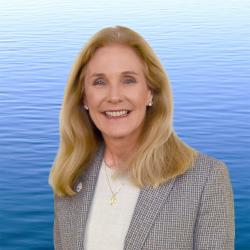
Jane Corwin – US Commissioner & Chair, International Joint Commission
Ms. Corwin served as a member of the New York State Assembly from 2009 through 2016, where she was the Minority Leader Pro Tempore and the ranking member of the Corporations, Authorities and Commissions Committee, as well as a member of the Environmental Conservation, Education and Mental Health Committees.

Mark Fisher – Chief Executive Officer, Council of the Great Lakes Region
Mark became the President and CEO of the Council of the Great Lakes Region (CGLR) in 2014. Prior to joining CGLR, he served as a foreign policy advisor in the Privy Council Office, which supports the Prime Minister of Canada and the federal Cabinet. Mark has extensive experience advising senior decision-makers on a range of socioeconomic and environmental issues facing government, business, and the non-profit sector. Mark is also a member of the International Joint Commission’s Great Lakes Water Quality Board.
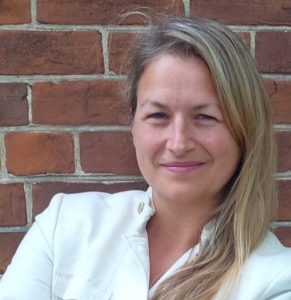
Julie Cayley – Executive Director, Severn Sound Environmental Association
Julie is a Government and Industry relations expert with a significant background in creating successful connections within Government, Industry and NGO/Not for Profits. Over her career she has worked for Provincial Government and NGOs as well as running her own consulting business. She specializes in Environment and Conservation with agriculture and rural partnerships and has a passion for working with communities on the Great Lakes.
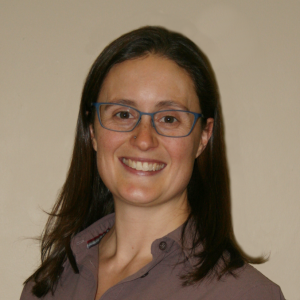
Aisha Chiandet – Water Scientist, Severn Sound Environmental Association
Aisha focuses on water quality monitoring of lakes and tributaries in the Severn Sound watershed with a particular emphasis on nutrient conditions and responses of biological communities. Her work has also included analyses of climate impacts on local waterways, including on water levels. More recently she initiated several citizen science programs with goals to monitor the impacts of climate change, algae growth and water level fluctuations.
 Brian Majka – Senior Restoration Ecologist from GEI Consultants
Brian Majka – Senior Restoration Ecologist from GEI Consultants
Brian is a professional restoration ecologist responsible for ecological restoration design and implementation projects for GEI Consultants. He is a founding member of the Michigan Natural Shoreline Partnership, and is currently in the process of developing Great Lakes nature-based shoreline decision tools for the states of New York and Michigan, as well as a nature-based shoreline certification program for the state of Ohio.
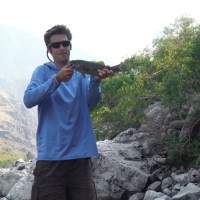 Alex Ray – Owner and Lead Consultant, Payette Environmental Services, LLC.
Alex Ray – Owner and Lead Consultant, Payette Environmental Services, LLC.
Alex specializes in the intersection between recreation and water resources. Before starting his own business, Alex spent over 15 years working for federal land management agencies across the Western US. He regularly speaks with activist groups about boat wakes and their impacts on aquatic ecosystems, and is currently working with the US Forest Service to re-route trails and restore alpine meadows on the Payette National Forest in Idaho.
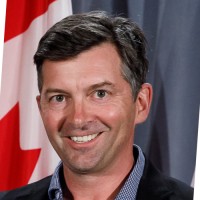 Roy Brooke – Executive Director, Municipal Natural Assets Initiative
Roy Brooke – Executive Director, Municipal Natural Assets Initiative
Roy served as Director of Sustainability for the City of Victoria between 2011-2013. He worked for the United Nations, including posts with the World Health Organization, United Nations Environment Programme, as Environment Programme Coordinator, and UN Office for the Coordination of Humanitarian Affairs. Prior to this he served as a political advisor to Canada’s environment minister.
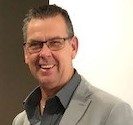 Rick Layzell – CEO, Boating Ontario
Rick Layzell – CEO, Boating Ontario
Rick has been in the marine industry for over 30 years with Grew Boats, Yamaha Motor Canada, Gordon Bay Marine, and MD Marine Insurance. Boating Ontario represents over 530 member companies across the province serving every facet of the recreational boating industry.
 Dr. Neil Hutchinson – Founder & Senior Scientist, Hutchinson Environmental Sciences Ltd.
Dr. Neil Hutchinson – Founder & Senior Scientist, Hutchinson Environmental Sciences Ltd.
Dr. Hutchinson has worked on water quality from Newfoundland to BC and from southern Ontario to Nunavut. His professional career has focused on pollutants and stressors of aquatic systems, with a focus extending from geochemical to laboratory to whole-watershed levels of investigation and a specialization in Precambrian Shield systems. Neil chairs the GBF Science Committee and is in the process of retiring from the consulting firm he founded in 2009.
 Cheryl Evans – Director, Flood and Wildfire Resilience, Intact Centre on Climate Adaptation
Cheryl Evans – Director, Flood and Wildfire Resilience, Intact Centre on Climate Adaptation
Cheryl has over 20 years of community engagement and program management experience in the fields of stormwater management, flood risk mitigation, home energy conservation and youth environmental education. She currently serves as a member of the City of Toronto Flood Resilience Working Group and is a Climate Change Committee Member for the Canadian Water and Wastewater Association.
Nicola Crawhall, former Deputy Director, Great Lakes and St. Lawrence Cities Initiative
Nicola’s consulting firm, Westbrook Public Affairs, led the secretariat that developed Action Plan 2030. She is the former Deputy Director of the Great Lakes and St. Lawrence Cities Initiative, a coalition of Canadian and U.S. mayors who work together to protect the Great Lakes. Nicola has served as senior policy advisor to two Ontario Ministers of the Environment, and as senior environmental policy advisor for the Association of Municipalities of Ontario.
With special thanks to Marilyn Capreol, Shawanaga Elder and founding member of the Conservation Through Reconciliation Partnership Elder’s Lodge for providing insightful and reflexive opening and closing remarks for all three webinars. Miigwi’ch.





 The final webinar in our series examined the cost of high and low water levels on your infrastructure. Our experts discussed septic systems vulnerabilities, the potential impacts of extreme weather on property insurance, and what is being done to provide support for municipalities and businesses to address shoreline infrastructure impacts.
The final webinar in our series examined the cost of high and low water levels on your infrastructure. Our experts discussed septic systems vulnerabilities, the potential impacts of extreme weather on property insurance, and what is being done to provide support for municipalities and businesses to address shoreline infrastructure impacts.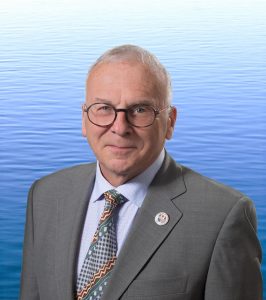




 Brian Majka – Senior Restoration Ecologist from GEI Consultants
Brian Majka – Senior Restoration Ecologist from GEI Consultants Alex Ray – Owner and Lead Consultant, Payette Environmental Services, LLC.
Alex Ray – Owner and Lead Consultant, Payette Environmental Services, LLC. Roy Brooke – Executive Director, Municipal Natural Assets Initiative
Roy Brooke – Executive Director, Municipal Natural Assets Initiative Rick Layzell – CEO, Boating Ontario
Rick Layzell – CEO, Boating Ontario Dr. Neil Hutchinson – Founder & Senior Scientist, Hutchinson Environmental Sciences Ltd.
Dr. Neil Hutchinson – Founder & Senior Scientist, Hutchinson Environmental Sciences Ltd. Cheryl Evans – Director, Flood and Wildfire Resilience, Intact Centre on Climate Adaptation
Cheryl Evans – Director, Flood and Wildfire Resilience, Intact Centre on Climate Adaptation
